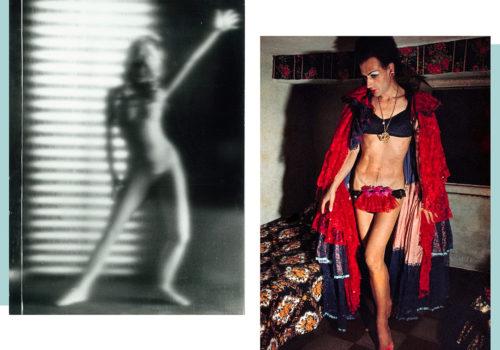This is the twenty-second dialogue in the Ettore Molinario Collection. A tribute to one of the greatest Italian photographers, Lisetta Carmi, on her birthday, February 15th. Free spirit, « person » without male and female roles that could decide her fate, Lisetta has looked at the community of transvestites like no one did before her and like few would do later. And such a free woman, perhaps, would have been a model of independence even for Brigitte Bardot.
Ettore Molinario
For Lisetta they were sisters, roommates in that big house that every city tolerates in its darkest and therefore most desired places. Lisetta Carmi, a talented pianist and later an extraordinary photographer, met « her » transvestites for the first time on New Year’s Eve in 1965. The occasion is a party in a small apartment in the Genoa ghetto; they are there, butterflies, fawns, otherworldly sylphs who in this world unite male and female nature, and then there are some customers, other friends, and there is Carmi, who discreetly asks to be allowed to portray the protagonists of the evening and promises to offer the images the next day. So at the beginning of the new year, a fundamental relationship is born in Lisetta’s history, which will lead to the birth of a unique book in the Italian and international panorama, I Travestiti, released in 1972 and, like its protagonists, opposed, mocked, censored. A destiny that Carmi already foresaw, having chosen since the beginning of her career to document life on the margins, any existence that struggled to get out of the dictatorship of a role imposed by others. They could be the exploited camalli of the port of Genoa, they could be the deceased of the monumental cemetery of Staglieno, who begged for another life, and it could be Lisetta herself who in the 60s moved away from any traditional category of the feminine, when being a woman meant to adhere to the decalogue of male impositions.
Therefore, it might come as a surprise Carmi’s closeness to men who fought to transform themselves into the emblems of the most seductive femininity of the time, because they were women-women, like Audrey Hepburn, Twiggy, Brigitte Bardot, Mina, Dalida – women for the male, cover women – that transvestites aspired to look like. Though Lisetta Carmi never dwelt exclusively on the final point of the metamorphosis, since it was the process of personal transformation that captivated her, the permanent revolution that destabilises every category and voluntarily announces the crisis of roles. And thanks to this profound consonance of feelings, the photographer was able to enter the daily intimacy of the bedrooms, the hairdressing salons, to stand in front of the mirror, behind the nylon curtains that, similar to theatre curtains, were the places where the disguise happened.
She had to be different from anyone else, Lisetta, in order to be able to witness the movements of the inner ghost that tore apart an ego to which society had entrusted a different kind of feeling. And following the make-up phases of Audrey, Cabiria, Gilda, Morena, as the transvestites were named, and contemplating the beauty of the transformation, Carmi had imagined Brigitte Bardot’s ectoplasm pushing to come out of a male body and cover it with a second transparent skin. In 1961 Lola Montez, « the Spaniard », one of the four portraits of Lisetta Carmi present in the Ettore Molinario Collection, had probably seen the film La bride sur le cou. In the Italian adaptation the shower scene was censored. In it a naked B.B. danced behind a glass, herself a ghost of male desires, born out of the imagination of Roger Vadim, her husband, Pygmalion and director even when the love story was over. He had wanted her to be blonde, as he later did with Catherine Deneuve and Jane Fonda, he had taught her how to pout; he, like in the title of the famous film Et Dieu créa la femme, had moulded her in the clay of his desires and in the desire of millions more viewers. But what is more revolutionary, a man who decides the fate of a woman, or a man who becomes a woman to finally be free?
Ettore Molinario
www.collezionemolinario.com
















